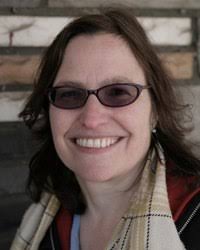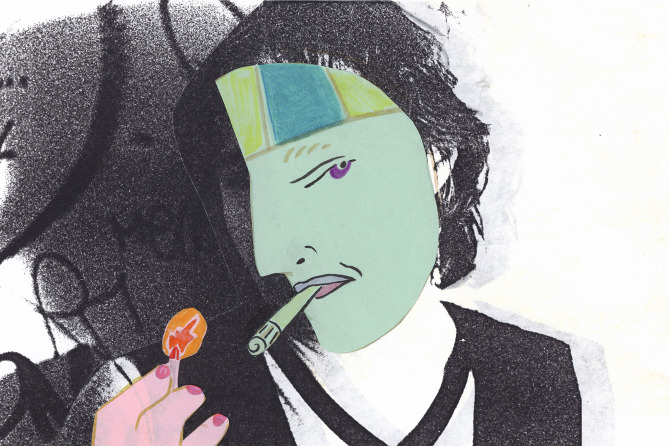While watching Emily Hubley’s animated short films, I feel a sense of wonder and delight at the fluidity and mellowness of the shapes that move and play happily like a dance, telling a story, submissively changing and spiraling, with simplicity of lines, figures and faces that flow like water trickling, magically expanding and retracting from scene to scene, dreamily, with a quaint dashing of musical accompaniment (often composed by her sister’s band, Yo La Tengo) that sets the perfect tone.
In this interview Emily engages us with her animation process and the combination of techniques she uses to make her films, her involvement as an Annenberg Film Fellow at the Sundance Institute’s Screenwriters’ and Filmmakers’ Labs and the fun she had working on her 2009 film The Toe Tactic. We are also intrigued by her story as a kid growing up in Manhattan, what advice for new animators she offers, her experience collaborating with her son-Max, and working with her parents-John and Faith Hubley, pioneers of animation.
by Samia
Has your hand process of animation changed at all since you’ve been doing animation?
I still animate and lay things out by hand. The only thing that’s different now is that I scan the art into a computer, and in many cases, I color digitally instead of by hand. The shift into the digital process has been happening, I guess since about 2000. The Hedwig job and Pigeon Within were the last two projects that were all analog and then shot on film. The job after Hedwig was a documentary called Blue Vinyl, and for that we animated by hand, scanned it and added color with Photoshop. We shot it pretty much straight ahead – no digital bells and whistles. After Effects can do all kinds of things! I pretty much use After Effects as a camera stand, and I use Photoshop to clean up, rescale and color. I like to combine hand and digital coloring, so it’s not completely flat/fake-looking. It shifts from piece to piece. But one of the things that’s good with the digital system is that you can edit. You get a chance to re-edit and tweak the timing and that can really improve your work. Certainly with the last few music videos I’ve done, I’ll make a plan, animate the plan, and then edit it. You can improve the cut by fine-tuning the edit. You can do it of course, film editing, you can edit a film, but it’s a lot easier to do that digitally.
Can you talk about the film process for someone who doesn’t know anything about animation? Analog versus digital?
With Hedwig, the sound was locked, so we were working to the dictates of the sound, and with my films I usually make that commitment. Sometimes I’ll go back and change the sound afterwards, but I generally animate to the sound. So once you have your temp track or whatever, there’s a thing called track reading, which is determining where all the sounds are. I’ll make a storyboard – a plan for the visuals, and create layouts from the board. I like to leave space when I’m animating, but I’ll make the major decisions – with room to improvise between key moments. The way you get from A to B can be anything. You end up having visual surprises because you go into sort of a subconscious state when you are just drawing and things emerge that aren’t planned or consciously dictated. That’s the fun of it, especially if you are working with very minimal or abstract shapes, lines and so forth.
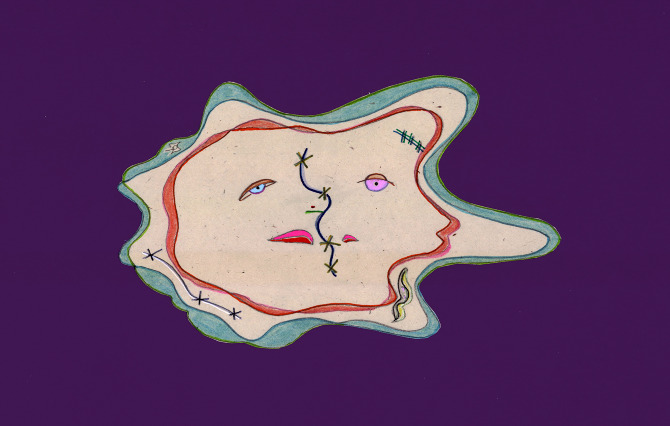
You have more freedom to do that.
Yeah, and surprise. On some movies, you’re like what are we going to put in there, and you’re like I don’t know I’ll figure it out. It can seem like a burden but as soon as you stop looking at it as a burden, it’s more like recess – it’s play. There’s room for discovery – it’s like a little bit of a window into some chaotic universe you’re visiting and you’ll see what’ll hapen there.
So it sounds like you enjoy that…
You enjoy the discovery and if something is crappy, you don’t use it. But apart from a small number of projects that didn’t work out, I’ve had very few cases of fully abandoning an idea.
What did you learn at the Sundance screenwriters and filmmakers lab and how did you get that opportunity?
Oh yeah, that was a gift. That was just lucky me. They brought in advisors, screenwriters and directors – all different kinds of people, and it was really interesting. You got different kinds of advice from everyone. Some people would be very structure-oriented and give very nuts-and-bolts kinds of advice. Other people would respond strongly to various aspects – the responses were pretty diverse. I went to the screenwriters’ lab twice and the first year, the script was a lot looser, and people couldn’t figure out what the hell I was trying to do. That first year, there were two camps of advisors – one that wanted to get rid of the dogs and the animation (laughs), and the camp that was for the dogs. It would have been fun to watch that discussion. It was a big hard leap to imagine the film from reading words on the page. It’s a stretch for some to understand how the animation depicts a parallel reality. At the labs, I tried to keep an open, appreciative mind, to listen to everybody, take notes, and then I went home to see what stuck.
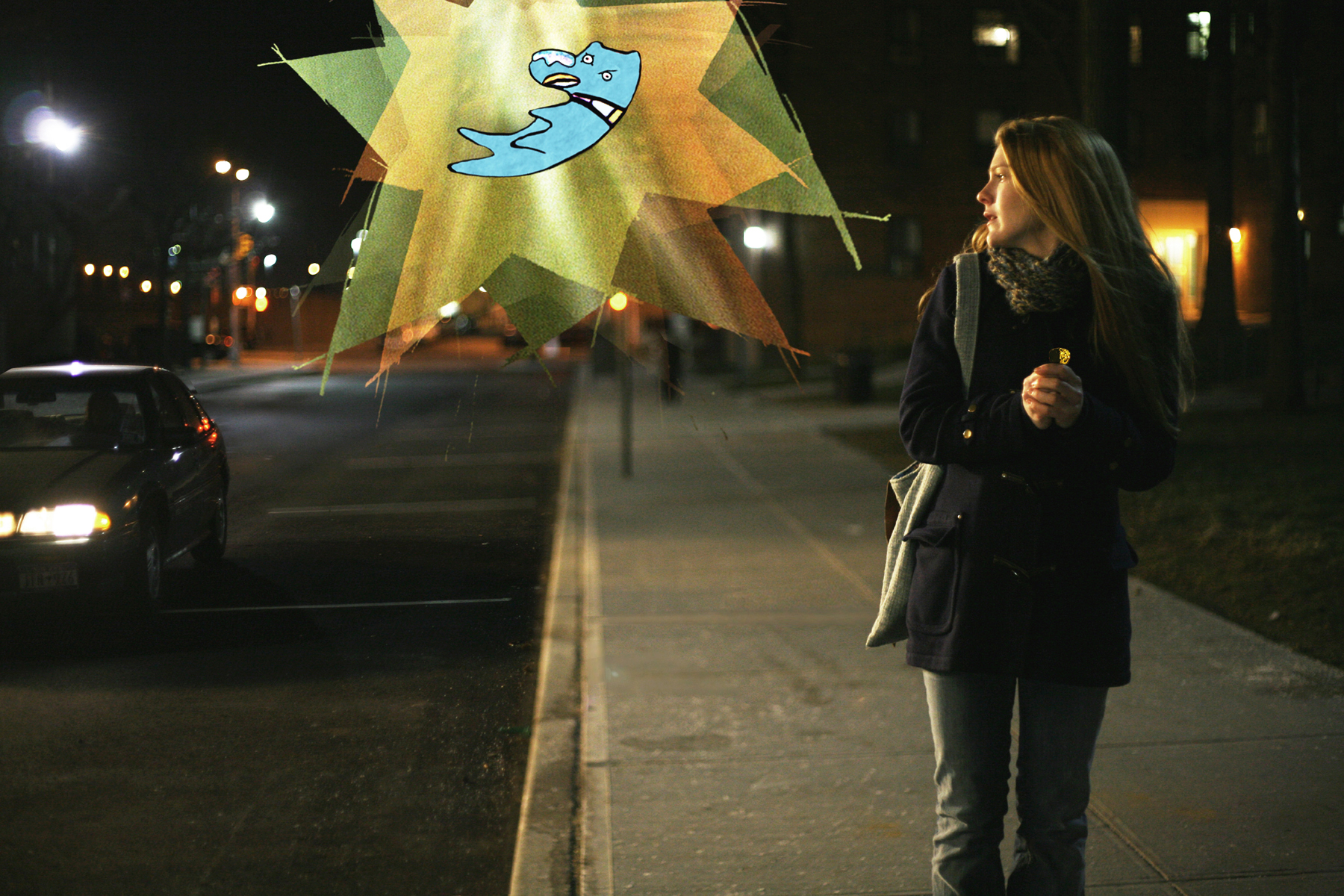
So you have to go in there with your script.
You have to have a script, and then you have to defend it, or not defend it. Everyone is trying to help the Fellows arrive to a clearer picture of their projects.
How many Fellows are there at a time?
They had 10 or 12 – each with their own project. It certainly helped me. I didn’t know really know what I was doing – I’d basically worked on my own or with a very small crew. I learned how to trust (or when to not) my instincts.
Were there any real notable screenwriters or people you knew?
Sure, there were lots of very accomplished people and some of them were very literal, so I tested that and that tested me. Some people were quite opposed to the combination of animated and live-action stories. And that got my back up – animation is so pigeonholed and in some cases not respected. But there were nice reactions as well – I had lunch with Walter Mosley and he asked me, “Why didn’t you write this as a book? It would have been a lot easier. This is a book,” and I started to cry because I sort of set out to be a writer and I didn’t do that.
What was it like working with the different actors in your film, The Toe Tactic? Kevin Corrigan, David Cross, Jane Lynch…
It was fun. The making of that movie, again, was such a big present. The actors were all different. If you get the right animator, you don’t have to tell them much about what to do. It was the same thing with the actors. With the right actors you don’t have to tell them much – maybe a little specific suggestion. I felt like my job was to meet the needs of the actors, and allow them to do what they had to do. Some actors wanted a lot of information about the characters, and to talk a lot about the situation. Others, hardly at all. With Kevin, we talked a lot about music. Daniel London was at the labs with me and was in the movie. Everyone had a different way into his or her work and it was a matter of figuring out how to keep everyone in good working form. My first day of directing was the recording of the dogs’ voices. I wanted everyone at a table reading all the parts together. It got a little starchy at times, but it was great because the dog characters don’t all like each other so the prickliness fit. Don Byron, a jazz musician, kept saying he wasn’t an actor, but he did a great job. It was a very long day. Eli Wallach and Marian Seldes arrived about an hour before everyone else. They had fun talking about theater together, so they didn’t seem to mind waiting. Jane Lynch was great. Her part was supposed to be played by Debbie Harry, but she withdrew. Jane was a fan of Hedwig, so she took the part. She had the whole crew laughing on our longest shooting day – her and Jon Glaser. No one knew who Jon Glaser was, and he showed up for this one short scene – we were all biting our hands to keep from laughing out loud.
How many hours does it typically take you to produce one of your animation shorts?
It’s hard to measure, but the last two requests to come in were for music videos with tight budgets, so I’d try to figure out how to get them done in 100 hours or so. One worked out better than the other, but you get into a thing; you want to make it good, and sometimes that takes time.
How has your style evolved?
I don’t know. I keep thinking I need a new style! I was happy with and/or and thought I’d just try to make very simple movies. But every project seems to make its own demands. My decisions are pretty instinctive.
Another question I had was how do your ideas for films come to you?
When we were home dealing with the death of Will’s dad, I thought I should really make something. I shot all this film of Joey, the bird, and I wanted to make a rotoscope of the bird, but it just didn’t go anywhere. And now with Trump, you just want to try to do some good in the world, art-shmart. But then you need to make something in order not to hate yourself. I’m consulting on a film that is political and informative, but that’s not making something. It’s a little tough to know what idea will stand up to scrutiny, but sometimes you are an artist and just have to do it.
In your films you have this guy, Don Christiensen, doing music or sound, and then I looked him up and I found another Don Christansen who was an animator at the same time as your father, John Hubley, and also started out at Disney and worked during the same time that your father worked and left Disney…
Oh, I don’t know that other Don Christiansen, but Don Christensen that did music and sound with me early on, I just saw about three weeks ago. He’s a painter now in addition to playing drums and composing. He drummed with the Raybeats, and did a lot of work with Philip Glass. His brother was a famous painter. In fact, Donnie came to the set when we were shooting with Jane Lynch and Jon Glaser and doing those great scenes with Kevin Corrigan. And Lily Rabe really just delivered. When we were casting, I met a lot of actors who didn’t get the Mona character. But Lily is just so smart. And she complimented the writing, which meant something because I admire her father’s writing. I thought, I’m not going to have to tell her anything… Anyway that’s a little aside, (a shout out to Lily Rabe), but Don Christensen made a shift in his life and he paints now. Beautiful work. The thing with Don was that I was a fan of the bands he was in, and one of his band members sadly died very young and when that happened, I asked Don to make music for Delivery Man. I somehow wanted to bond in a way beyond being a fan. And then he did music for a number of my films. And when I shifted over to using music made by Georgia and Ira and Yo La Tengo, Don started composing for my mother’s films. Don and Faith really were kindred spirits in a lot of different ways and he ended up doing music for her films up until her death. They made amazing scores together.
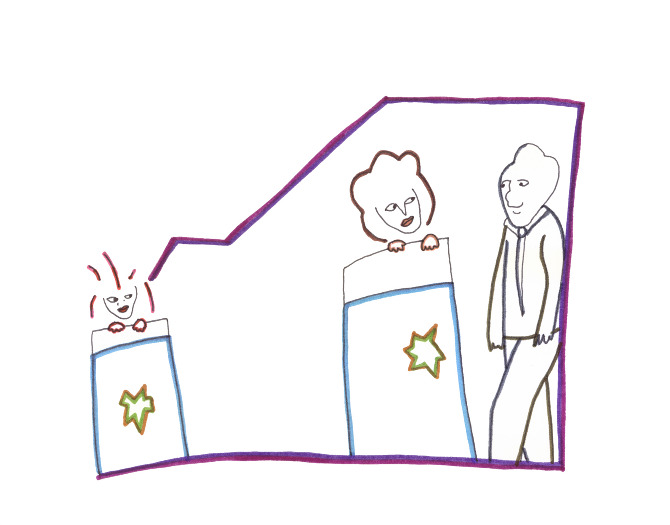
I just noticed that your style is maybe a lot more like your mother’s than let’s say your fathers…
Yes, I would say that’s true. And individual filmmaking is different from studio filmmaking.
Where did you go grow up, and what beaches were you drawing on with your family?
We went out to Montauk a lot. My parents built a house in Montauk but we grew up in Manhattan. We lived on the Upper West Side and then we moved to the Upper East Side. And then after John died, Faith continued to live on the Upper East Side, then she moved to Riverdale, then back to Manhattan. As kids, we lived on the Upper East Side. We went to school at Friends Seminary on the Lower East Side, 16th Street. We had bus passes and I would lose my bus pass by Wednesday latest, I’d keep losing my bus passes and some of the bus drivers knew me so they would let me on, but so much of the time I would end up walking home from school, and it was great. I know my 3rd avenue. I would go from 16th street to 72nd street – walking the streets of NY and daydreaming all the way home.
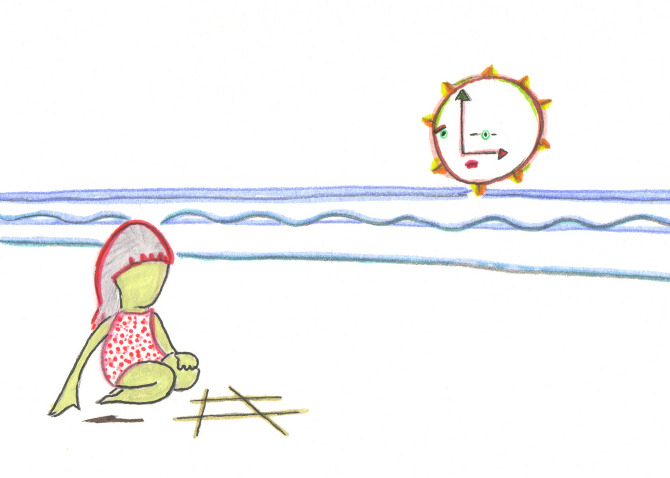
Yeah that’s quite a stretch.
It was like three miles. But you’re a kid, you got to get home.
What would you say to your 20-year-old self, or what would you say to a new animator?
I just went to visit a class at Montclair University and the students were asking me what did I regret doing– did I make any mistakes, what did I think I should have done, what choices did I regret?? They were hard ass, but it was fun. Any advice depends, of course, on a person’s aspirations. If I was advising my 20-year old self, I’d say, don’t stop for too long. I wish I would follow my own advice! Don’t stop, don’t get off the train. With making Toe Tactic I did sort of step off the train of making short films and exploring that personal voice. I don’t regret doing that movie at all, but there’s something really helpful to routine and regularity in artistic practice. And if you interrupt it for too long it’s too easy for doubt or let life get in the way. So that’s one thing. And you know, enjoy your work. If you have something you want to do just find a way to do it. It’s really possible to make things now and you can find people to team up with or you can find people to support you.
How has it been working with your family, your son Max, your sister, your brother.. do you think the experience is the same when you were working with your parents – or does it bring you back to days like that?
When we were working in my parents’ studio that was sort of different, cause we were working in a fairly large ink and paint department. Here, I work alone mostly. Max has helped design characters for me, and he scans and does clean up and coloring. I love that he’s doing that. And I often have summer interns. Working on Faith’s films- over all those years – I’d say the experience evolved. She really did love making her films, she loved explaining them to people, and she just loved the world she animated! And helping her in the service of that was a real pleasure. After I took over as her production supervisor, it was sometimes a challenge to get the work done. We had to finish the artwork every December, so she could do post production before the end of the year. Every single year. She was a happy machine.
That must have been great that she had you working with her…
It was. Sometimes it could be stressful, because she was always scraping by. We had a very small crew and I’m still friends with a lot of them. It was a fun way to spend the day. You would never get that job now, tracing and coloring all day. (laughs). After the kids were born, we moved the base to my house. And I had good friends working with us, coloring in my attic. We’d get to the end of the day and have dinner, a cocktail, and I remember the kids getting antsy for us to be done or for our friends to be finished. I remember Leila going up to Linda who was coloring a green goddess that filled up much of the page, it would take like 15 minutes to color one drawing, and asking, “When are you going to be done coloring that green booby lady!!? Come downstairs. We’re waiting for you!” We’d listen to music or books on tape and make the art.
Do you have any favorites in your collection?
Of my movies? Yeah, it’s interesting. Pigeon Within was a real struggle for me. I was really scared about making it. I had great interns working with me, and that was an enjoyable summer, but the story was scary one for me to share. It took a long time for me to get used to watching it with an audience, but over time, the meaning of the movie shifted for me. It was like a personal Rorschach test and that was cool. and/or was sort of like that as well. I was happy, in the end, with both films.
What about your parents’ films. Any favorites?
I have a few favorites… Eggs, Zuckerkandl is a favorite, Adventures of an * and The Tender Game. Voyage to Next was a big favorite of Faith’s, Moonbird is great… and The Hole, of course. We rented the films to a festival in Poland about ten years ago and I had to transcribe all the films so they could be translated. It was such fun – The Hole, Moonbird, Cockaboody: they all have great scripts. When I arrived, I had to go directly to the children’s program that was being screened in this massive governmental building, and it was packed with kids. The city translator was a big deep-voiced guy, doing the voices of little Georgia and Emily and the kids were laughing their heads off. It was hilarious – and then they introduced me as Emily – and all the faces dropped – the kids were so disappointed that I wasn’t a child any more.
https://www.youtube.com/watch?v=NSFKjfQolgY
Of the films you’ve been producing after your parents passed away, what would they say, would they be critical, would they praise?
Oh boy, I don’t know. I think they would have liked The Toe Tactic. I spent a lot of time worrying about that. The film is dedicated to them.
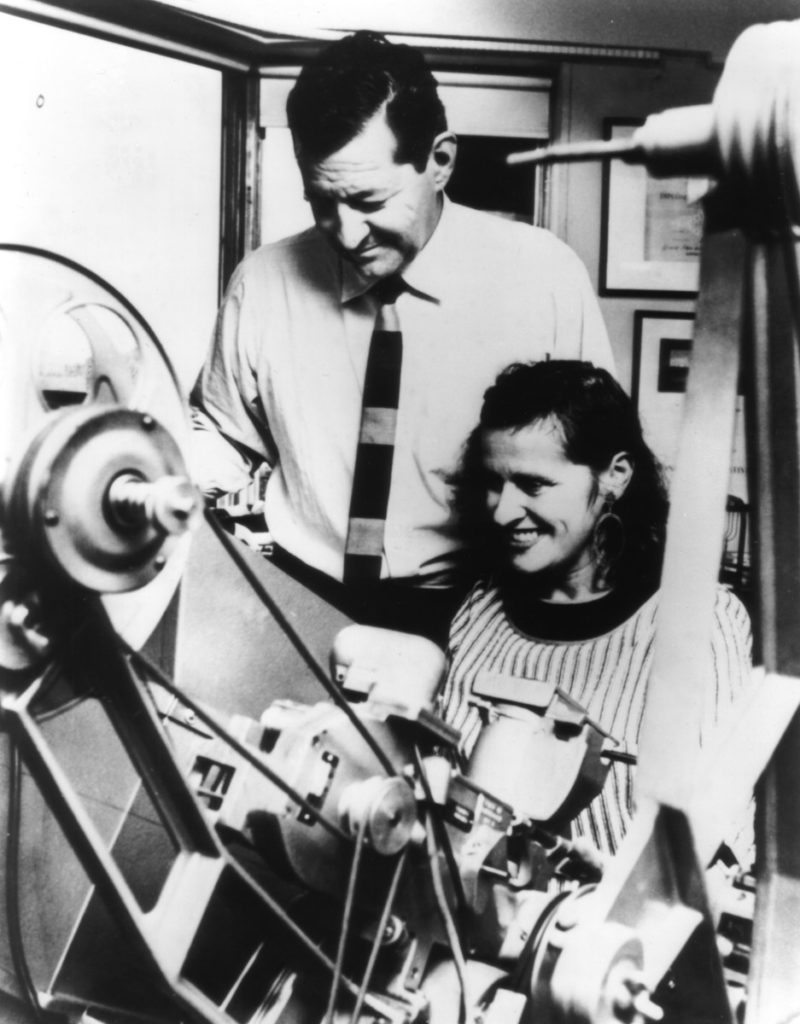
Are you working on anything right now?
I am working on something – Faith drew a lot of self-portraits in her journals, and I’m working on a project with those. I just finished Brainworm Billy, a short written and narrated by Max. It premiered at the Montclair Film Festival last Saturday. Such fun doing the intro with him!

